Historic Whitby in Photos
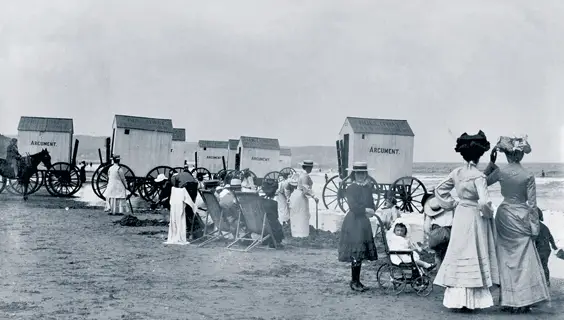
By Robin Cook
This collection of Whitby images helps to explain the enduring appeal of a very special town, not only to its residents, but to the countless visitors both nationally and internationally. It certainly has an enviable history: in early Church developments, world explorer and navigator Captain James Cook, Arctic whaling – particularly the Scoresby family – and in the manufacturing of the famous Whitby jet jewellery.
It lies in a very picturesque setting of high cliffs, has an attractive harbour at the mouth of the River Esk, and the ancient abbey ruins dominate the old town. These early photographs mean so much more when enough of the past has been preserved in buildings and streets to enable the later changes to be recognised and better understood. The invention and development of the photographic camera has significantly helped to promote the deserved reputation of Whitby in the wider community, and the town has been fortunate in having a series of talented and sympathetic practitioners who have championed the attractive features of this ancient settlement.
From the early carte de visite images of people like William Stonehouse, George Wallis and John Waller (from the 1860s onwards) to the later major figures of Frank Sutcliffe, John Thomas Ross and the Doran family, and more latterly, for example, Hugh Lambert Smith, John Tindale and the Eglon Shaw family, all of these have served to put Whitby very much ‘on the map’. Scarcely a month goes by without a feature about Whitby appearing on television, starring in tourism surveys, in the national as well as the regional and local newspapers, and in the more contemporary forms of electronic communication.
The Khyber Pass
The Khyber Pass was cut out from the cliff in 1848 to give access from the harbour to the newly developing residential properties on the West Cliff. Bathing machines can be seen drawn up in the left hand corner of the postcard (above), taken around 1905 before the pier extensions were constructed. Unsurprisingly, the motor car now dominates the same scene.
A Fisherman’s Study by JT Ross
John Thomas Ross specialised in producing real photographic postcards of typical scenes in Whitby before the First World War. Taken around 1908, this view shows ‘Whitby Fishermen Repairing Crabpots’ by the harbourside. Full of atmosphere, such postcards represented the Facebook or Instagram of the period, with no radio, TV or even newspapers for ordinary folk.
‘Gipping’ Herrings
Taken just before the First World War – the new harbour bridge can just be seen in the distance – this postcard shows the Scottish herring girls on the Fish Quay. The herring shoals moved south across the Yorkshire coast in July and August, and the Scottish boats followed them, with a team of their own girls to gut the herrings and pack them tightly with salt into barrels for trade at home and abroad.
The Rowing Lifeboat
A harbourside view from around 1905 of the rowing lifeboat John Fielden. The volunteer crew are all wearing their cork life jackets. J. T. Ross entitled this view ‘Whitby’s Brave Hearts’, capturing the courage required to face sometimes mountainous seas when rescuing survivors. Compare this to the powerful modern lifeboat (inset), although the serious challenges and risks are still there.
Whitby Lads
With the old bridge in the distance, a large group of young lads has gathered below the Marine Hotel at Coffee House End at the seaward end of St Anne’s Staith. This is a postcard by J. T. Ross taken around 1905. Two traditional Whitby fishing cobbles enhance the scene, which has more appeal than the modern equivalent.
The New Bridge Opening Ceremony
With the structure of the temporary bridge still evident, the excited crowds try out the new swing bridge on its opening day – 24 July 1909. Costing nearly £22,600, it was declared open by Mrs Gervase Beckett, the wife of the local MP. In more recent years there have been calls to further limit the weight of vehicles using it, particularly in the light of a series of mechanical failures.
Children’s Peace Celebration
A fine view of several hundred Whitby children and their parents in front of the railway station, celebrating the end of the First World War. The date is 16 July 1919. At least 280 men from Whitby parish didn’t return from the First World War.
Argument’s Yard
Probably the most famous of Whitby’s yards, Argument’s Yard lies off Church Street and is named after a prominent local family who owned most of the beach bathing machines around 1900. At times the yard was clearly in need of serious refurbishment, but today it is a fairly chic and fashionable address.
Sea Bathing
Posted in August in 1905, this Ross postcard brilliantly captures the age of the bathing machine. Most of them were owned by a local family firm by the name of Argument. When the customer was on board, they were drawn out into the deeper water. The bathers changed inside, having paid their 6d for a half hour’s experience, and entered the water from the front steps. Men and women had separate sections of the beach for this activity, in order to avoid too much excitement. Note the lovely Edwardian outfits – probably too overdressed for the sands by our way of modern thinking!
Whitby Spa
In this image from around 1908, the spa building lies on the left, but the rest of the site has since been much modified over the intervening years. Elegance is again in evidence. In the right-hand distance is the Hotel Metropole, on top of the West Cliff.
Article taken from ‘Whitby History Tour’ by Robin Cook, published by Amberley Publishing, £7.99 paperback, ISBN: 9781445679853
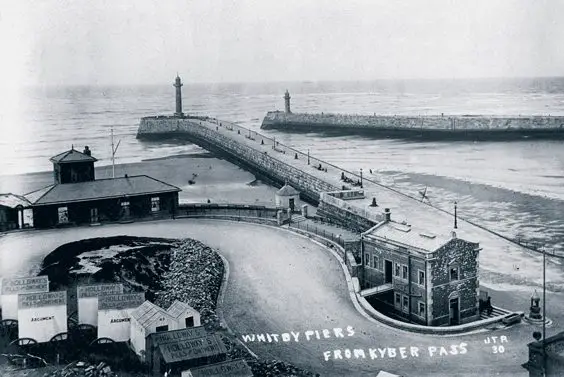
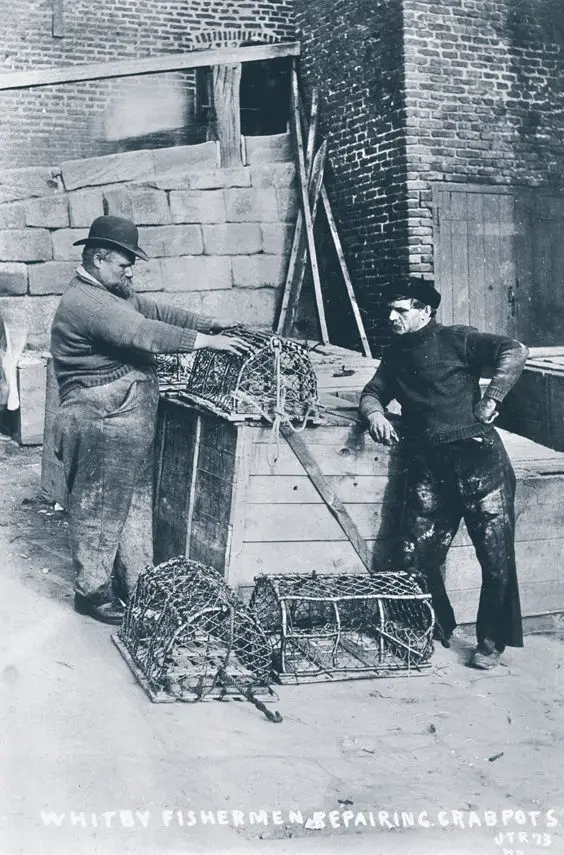
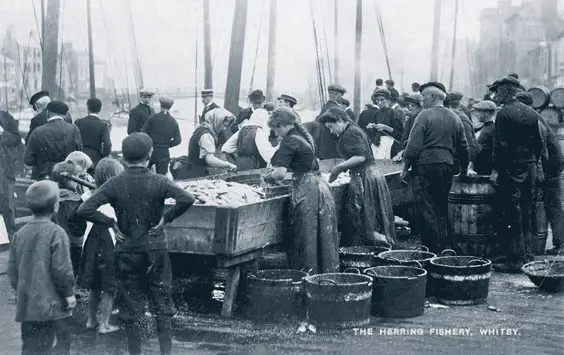
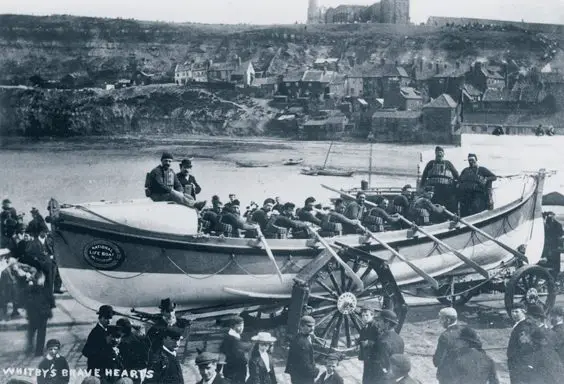
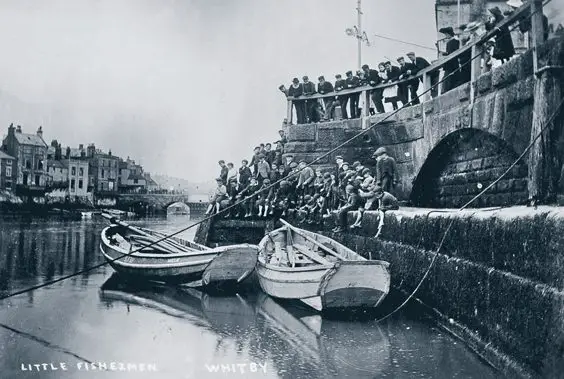
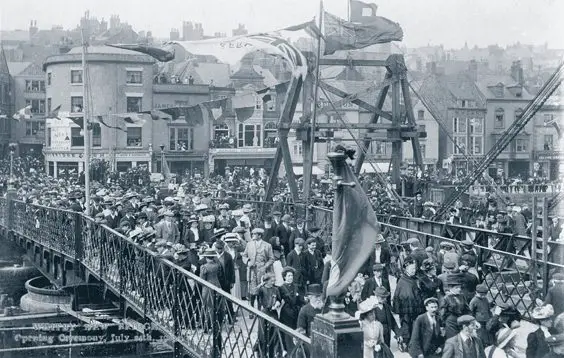
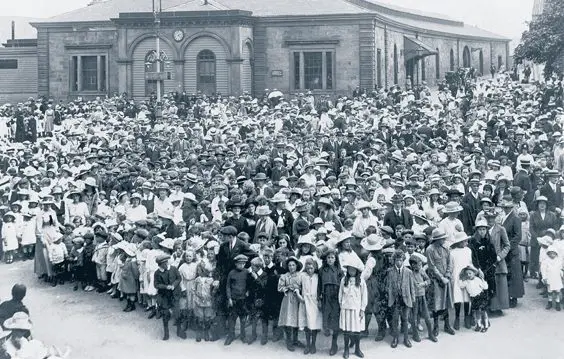
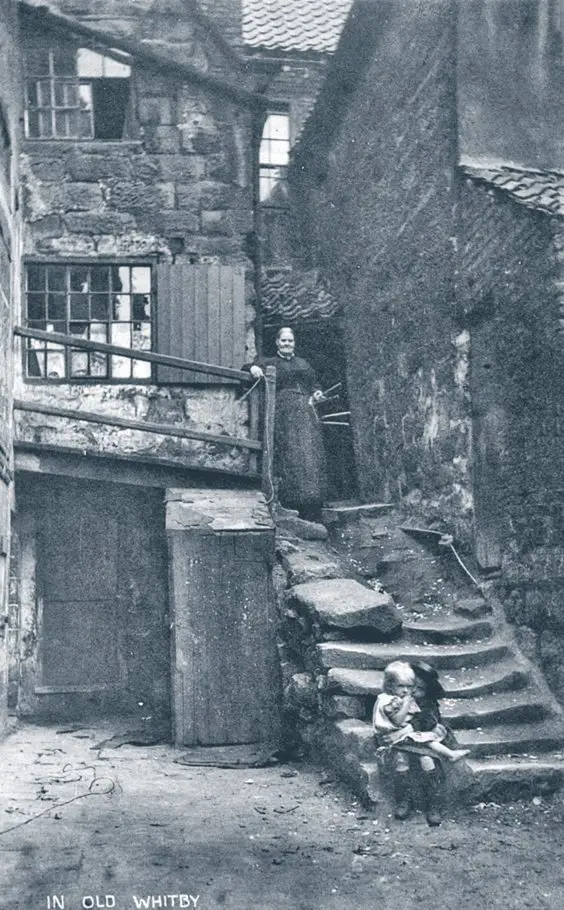
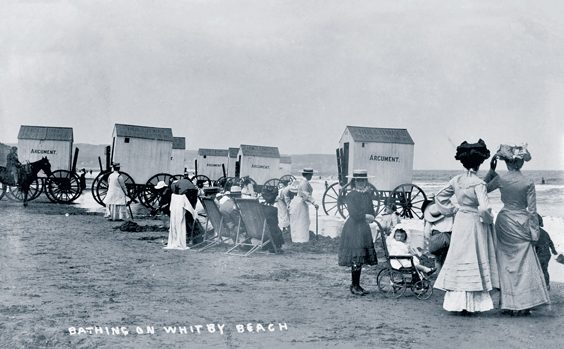
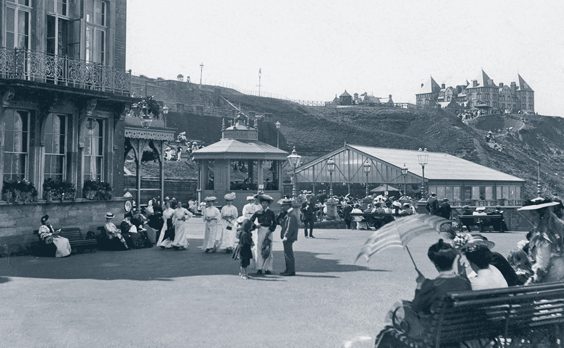
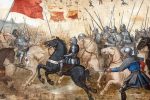

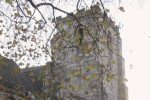






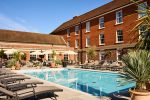
Great historic pictures